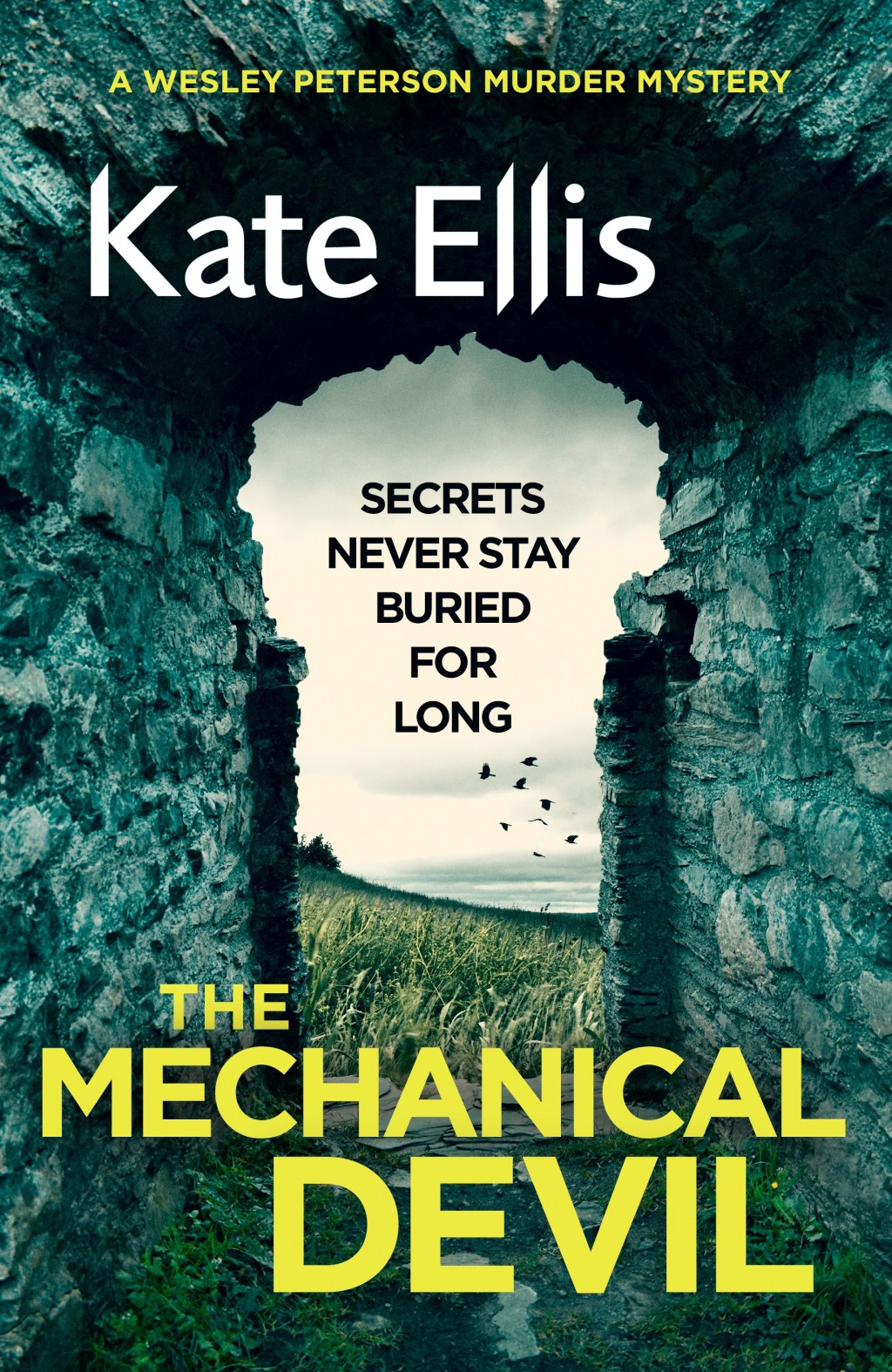Kate Ellis and the inspiration behind The Mechanical Devil

Best known for her Wesley Peterson mysteries, Kate Ellis writes intelligent, intricately plotted detective stories that will have you hooked from cover to cover. Read on to found out more about the inspiration behind her new Wesley Peterson mystery, The Mechanical Devil.
Some say that artificial intelligence will soon allow robots to think for themselves. It’s predicted that in the future they’ll relieve us of life’s more tedious tasks as well as keeping the lonely company and caring for children and the elderly. In Japan it seems they can already take the place of romantic partners and it appears that there will be no end to the uses mechanical beings can be put to. But somewhere, lurking behind this brave new world with its regular scientific breakthroughs, lies the awful fear that maybe one day we humans will become redundant.
You might think that the creation of robots is cutting edge technology – the stuff of science fiction rather than historical crime – but the fact is robots have been with us for centuries. There is even evidence that the ancient Egyptians and the ancient Greeks experimented with their creation.
The initial idea for The Mechanical Devil came to me when I saw a newspaper article about a sixteenth century robot that was to leave its usual home at the Smithsonian Museum in Washington DC to go on display at the Science Museum in London.
It was a small figure, just fifteen inches high, made of wood and iron and dressed in the robes of a friar. It had been made by a Spanish clockmaker on the orders of King Philip II of Spain (of Armada fame) to provide instant prayer at the turn of a key and, once wound up, the ‘little friar’ as it was known walked forward moving its lips in prayer and raising and lowering its arms as its eyes followed the movement. Its purpose was to ‘pray’ for Philip’s son, Don Carlos (the subject of Verdi’s famous opera), who had suffered a life threatening fall. Incidentally, Carlos did recover on that occasion but the ‘little miracle worker’s’ effect didn’t last; the prince was later imprisoned by his father and died in solitary confinement.
It was the photograph alongside the article that particularly caught my attention. My first impression was that its painted wooden face, with its hooked nose and articulated mouth reminiscent of one of those creepy ventriloquist’s dummies, looked rather sinister. Although it was designed to provide comfort to the sick Don Carlos, I felt there was something distinctly evil about it and this impression stayed with me as I started to write The Mechanical Devil.
The story begins when a small lead coffin is found by workmen digging up the road near a medieval church on Dartmoor; a coffin that turns out to contain a small robot (not unlike King Philip’s). But what is it doing buried there in an isolated Dartmoor village? And could this strange find have a connection to a manor house destroyed by fire during the reign of King Henry VIII; a house that once stood in the very field where two strangers have just been found dead, possibly the victims of a professional killer.
The Mechanical Devil is one of Wesley Peterson’s most baffling cases yet and things turn very dark when the investigation puts the lives of those close to him under threat. I do hope you enjoy it – and that you don’t have nightmares about fifteen inch high robots taking over the world!
The Mechanical Devil is out on the 1st February 2018.
Secrets never stay buried for long . . .
When archaeologist Neil Watson unearths a long-buried mechanical figure in a Dartmoor field, he is determined to discover the truth behind the bizarre find.
Soon, however, the sleepy village becomes the focus of press attention for another reason when two people with no apparent connection to each other are found shot dead in nearby Manor Field, seemingly victims of an execution-style double murder.
DI Wesley Peterson is called in to investigate, but the two murders aren't his only problem. The daughter of a local MP has gone missing and the pressure is on to find her, especially when it's revealed that she has a connection to one of the murder victims. And Wesley's own life is thrown into turmoil when a woman he helped on a previous investigation finds herself subjected to a campaign of terror . . .
Is there a link between the double murder and the accidental death of a young history student in Manor Field twenty years ago? And just what is the true identity of the Mechanical Devil?
The compelling twenty-second mystery in the bestselling Wesley Peterson series, by acclaimed crime writer Kate Ellis: 'A beguiling author who interweaves past and present' The Times
What readers are saying about The Mechanical Devil:
'An excellent read with lots of interesting twists and turns and a historic mystery woven through it' Amazon reviewer, 5 stars
'Another superb story from Kate Ellis . . . One of my favourite writers' Amazon reviewer, 5 stars
'This series is my all time favourite - superb . . . Intelligent and exciting stories' Amazon reviewer, 5 stars
'Kate Ellis never disappoints' Amazon reviewer, 5 stars
'Brilliant book, thoroughly enjoyed it' Amazon reviewer, 5 stars
'I really enjoy the Wesley Peterson books . . . they keep you guessing right to the end . . . a fantastic series' Amazon reviewer, 5 stars
'One of my favourites . . . Incredibly skilled plotting . . . fans of Elly Griffiths and traditional murder mysteries will love this one' Amazon reviewer, 5 stars
'Fascinating historical plot line and twists and turns all the way through' Amazon reviewer, 5 stars
'Very entertaining . . . Another great book from my favourite author' Amazon reviewer, 5 stars







